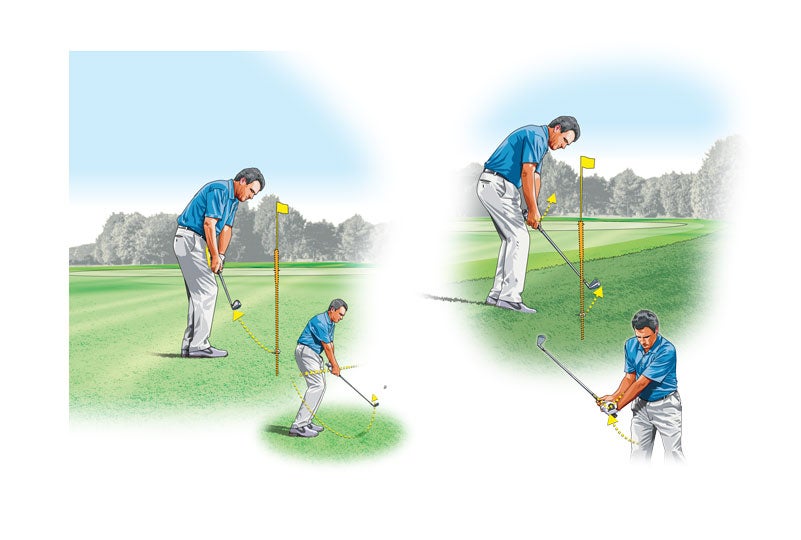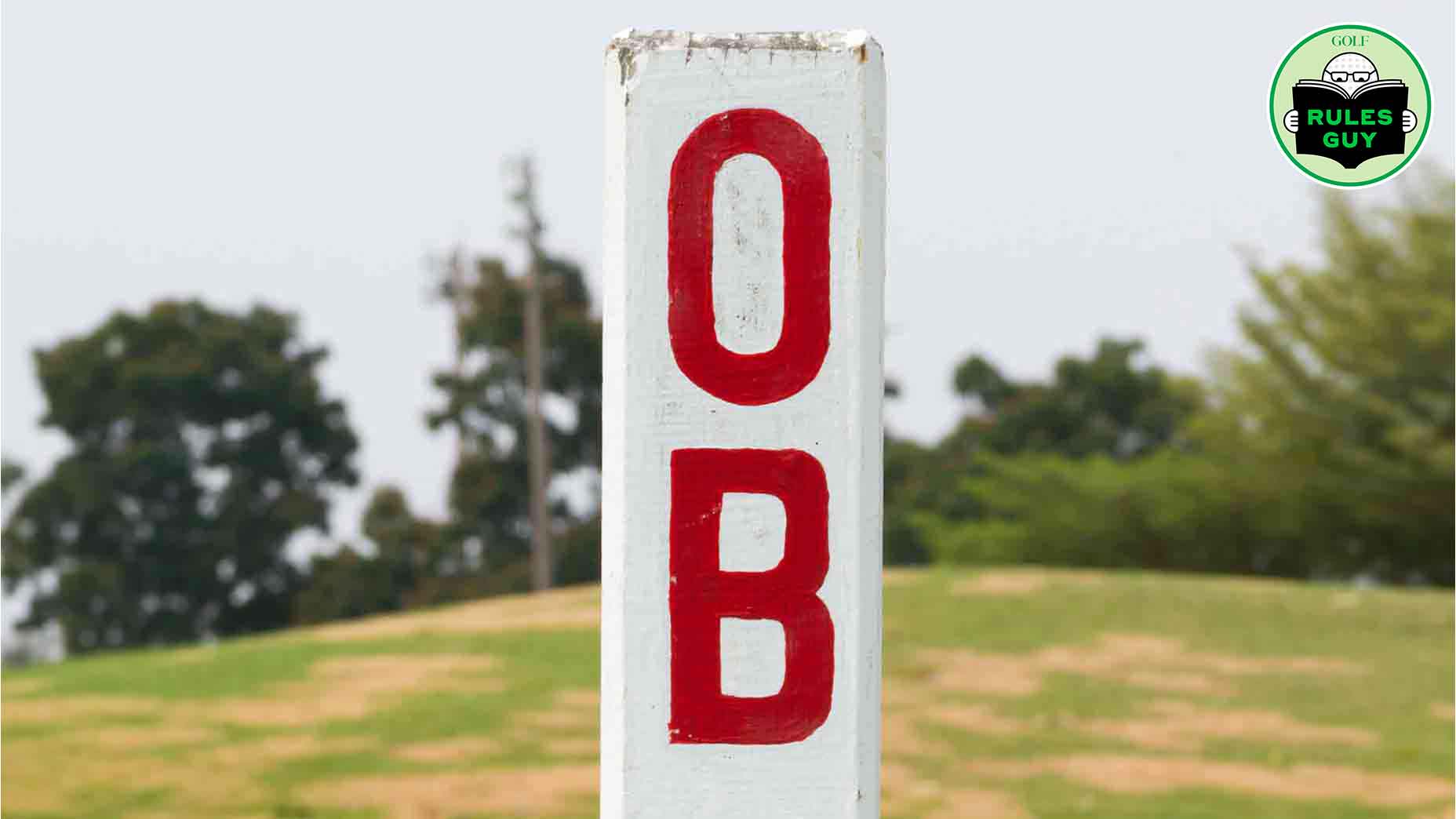When chipping, most golfers favor one club (i.e., a sand wedge) and one swing, regardless of lie. But that’s not wise, because a shot from the rough requires a different swing than a shot from a tight lie. Instead of falling back on a one-size-fits-all solution, learn how to make the right swing for a given situation. Sure, it takes a bit more thought, but you’ll chip it a lot closer and save par much more often.
TIGHT LIE: TAKE IT INSIDE
Depending on the pin position and the amount of green you have to work with, you may want to take a lesser-lofted club (say, a pitching wedge or a 9-iron) when hitting from hardpan or closely mown fairway grass. The motion should be similar to that of a long lag putt—that is, very rounded. Imagine a shaft sticking in the ground behind the ball on your target line—swing the clubhead to the inside of the shaft going back using little wrist hinge. On the way through, release the clubhead toward the target, as if you were trying to hook the chip, finishing with your hands low—about thigh height. This produces a shallower swing and helps you brush the ball clean off the turf, with little or no divot.
GRASSY LIE: TAKE IT OUTSIDE
If the ball is sitting down, use your most lofted wedge and swing the clubhead on a sharper, more up-and-down plane. This helps ensure that the clubhead meets minimal resistance as it moves through the grass and reaches the back of the ball. As in the tight-lie drill, imagine a shaft sticking in the ground on the target line behind your ball. This time, take the clubhead to the outside of the shaft going back, hinging the club up sharply with your wrists (think “low hands, high clubhead”). From there, simply let your arms fall and the clubhead swing down and through impact with no help from your hands. The head will dig deep into the grass and the ball will pop out high and soft, covering most of the distance to the hole.







